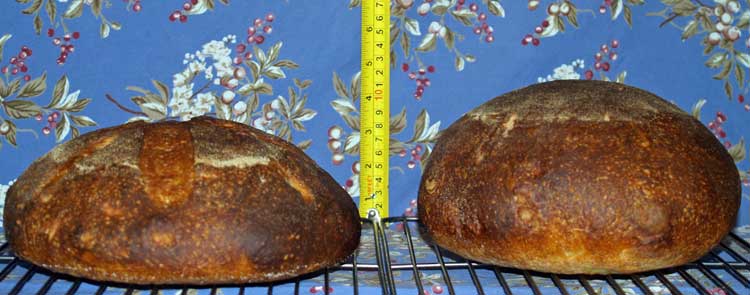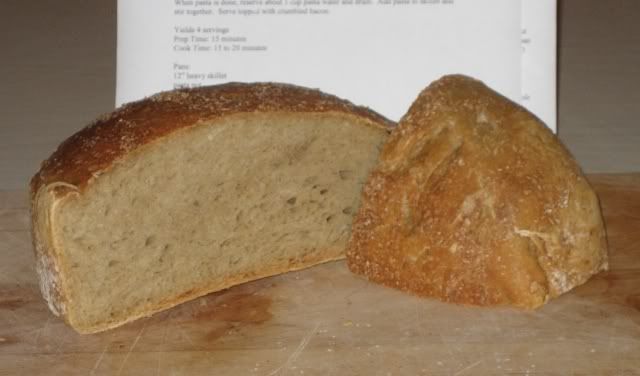Hi,
In my blog entry Test Tube Baking [1]: White French Bread I investigated how the final proof affects the outcome: Where does underproof end and where does overproof start, and what are the symptoms in the finished bread...
I chose to make batards proved seam-side up, and I think the choice of this method somewhat carmouflaged the effects of overproofing: Because the loaves had to be turned over onto a peel the fragile areas just under the skin collapsed, resulting in loaves with a surprisingly even texture. (this is my interpretation)
I wanted to see those big holes!
This time I decided to make 200g boules and avoid all handling during and after the final proof: after shaping I put them on buttered baking trays.
3 boules at 200g each, proved for 60, 120 and 160 minutes. The environment was slightly coolet than last time, about 22 to 24C.
At 60 minutes the boules seemed well risen and the poke test showed a slow response.
At 120min the remaining 2 boules had spread quite a bit, and when poking the dough it didn't resist any more.
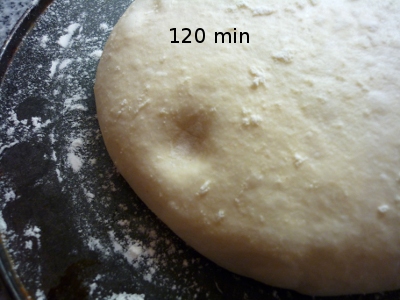
At 160 min the piece of dough which had been a boule looked more like a focacia, but it had all those bubbles. Poking the dough created bubbles places far away from the dent.
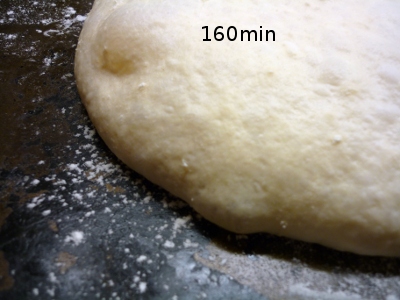
A sad sight.
Here is a picture of the baked loaves:
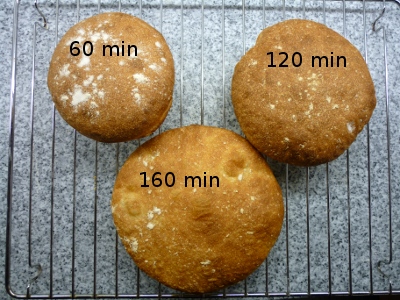
Observations:
Oven spring: the 60 min boule had good oven spring (30%), the 120 min boule had little oven spring, and the 160 min boule had no oven spring at all.
Blowouts: The 60min boule had a blowout near the base.
All loaves had fairly weak bottom crust due to them being baked on baking sheets, which were cold.
Some crumb shots:
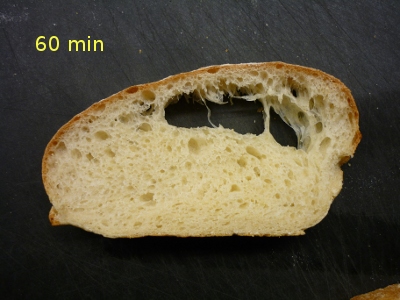
A big hole! at 60 min proof!
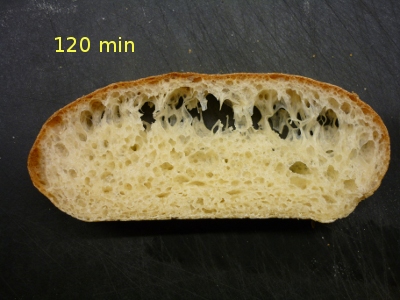
A different kind of a hole at 120 min. And quite a different crumb. Signs of gluten breakdown.
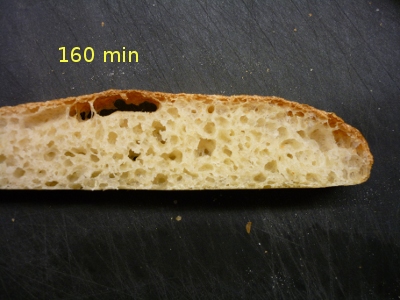
Total gluten breakdown at 160 min.
The crumb of this last specimen is more like the crumb I know from 100% hydration rye breads, just much dryer. The bubble structure of a bread at 60 min has turnted more into a complex structure with no distinct air pockets: everything is connected. There is no springiness, and the feeling in the mouth is more like cake, the taste a bit yeasty.
Here a direct comparison of the crumb:

The huge blowout at 60 min was a surprise, I attributed it to a lack of slashing.
So I made 2 more boules with 60 min final proof, on buttered cold baking trays, one slashed, the other not.
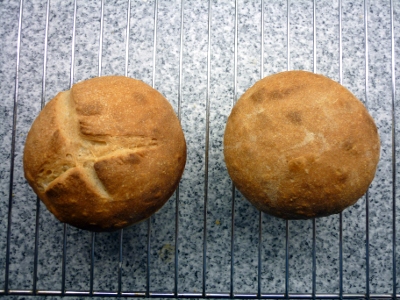
Both had blowouts of some degree, and the area under the skin was still very weak in the slashed loaf, while the unslashed loaf had a big hole.

I attribute this crumb to the cold baking tray- when put in the oven the top of the boules start fermenting immediately while the bottom gets going only after the baking sheet gets hot.
So many things to consider.
Conclusion:
In this experiment I produced some overproofed loaves with visible effects of gluten breakdown.
The reference loaves proofed at "optimum" time showed blowouts and flying crust which (I think) are effects of not slashing, and using cold baking trays.
I hope you find my investigations useful.
My family found these experiments tasty, and you will be glad to hear nothing has been wasted.
Thanks,
Juergen










